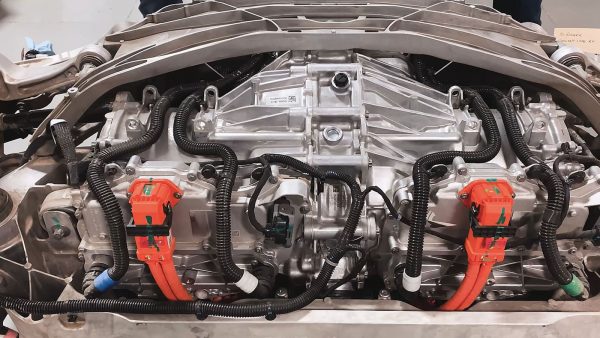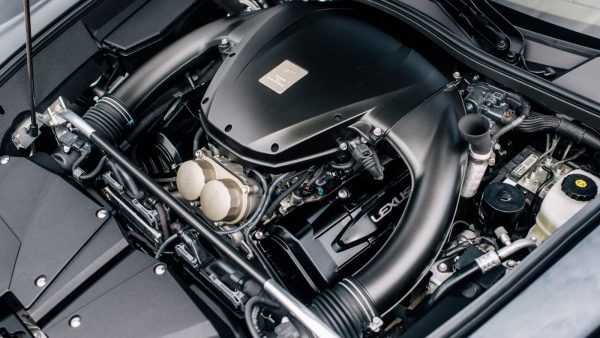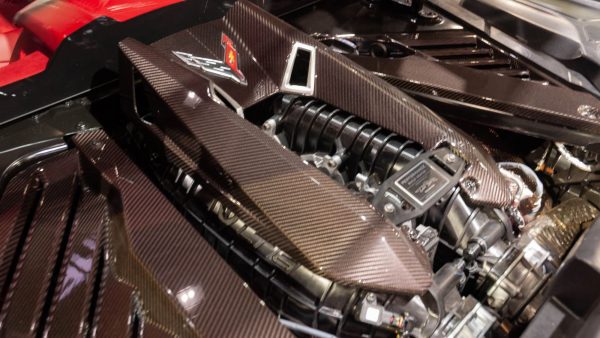Set forth on an enthralling expedition into the exhilarating universe of high-performance automobiles, a domain where the symphony of roaring engines harmonizes with the surge of unbridled adrenaline and the intense sensation of acceleration that anchors you firmly to your seat. This narrative is more than an indulgence for the die-hard car enthusiast; it’s a tribute to the engineering marvels that are the lifeblood of these speed titans. As we delve into the engines powering the planet’s fastest automobiles, prepare to be captivated by the extraordinary technology and innovative engineering that elevate them to the pinnacle of velocity.
1. Bugatti Chiron
2. Koenigsegg Jesko
3. McLaren Senna
4. Rimac C_Two
5. Porsche 911 GT2 RS
6. Hennessey Venom F5
7. Lamborghini Aventador SVJ
8. Ford GT
9. Aston Martin Valkyrie
10. Ferrari SF90 Stradale
11. Tesla Model S Plaid
12. Dodge Challenger SRT Demon
13. Pagani Huayra BC
14. Lexus LFA
15. Chevrolet Corvette C8 Z06
Bugatti Chiron
Our adventure commences with a spotlight on the Bugatti Chiron, a trailblazer in the hypercar cosmos. Residing at the core of the Chiron is an engineering masterpiece: an 8.0-liter quad-turbocharged W16 engine, a behemoth boasting 16 cylinders. This power plant generates an earth-shattering 1,500 horsepower. Coupled with a sophisticated all-wheel-drive system, it launches the Chiron from 0 to 60 mph in a staggering 2.5 seconds. The engine’s complex design, incorporating four turbochargers and an elaborate cooling mechanism, effectively manages the colossal heat produced during operation. This engineering feat enables the Chiron to achieve an electronically limited top speed of 261 mph, setting a new benchmark in the hypercar realm.
Koenigsegg Jesko
We then navigate towards the Koenigsegg Jesko, a marvel of Swedish hypercar engineering that pushes the boundaries of automotive ingenuity. At the heart of the Jesko throbs a 5.0-liter twin-turbo V8 engine, producing a titanic 1,280 horsepower on regular gasoline, and a mind-blowing 1,600 horsepower when fed with E85 biofuel. The Jesko’s pioneering camless engine technology, which supplants traditional camshafts with state-of-the-art pneumatic actuators, allows for unparalleled precision in valve control. This results in enhanced performance and efficiency. With a top speed projected to be in the vicinity of 300 mph, the Jesko is a testament to the relentless quest for speed and cutting-edge innovation.
McLaren Senna
We then cast our gaze upon the McLaren Senna, a homage to the legendary Formula 1 icon Ayrton Senna. This track-dedicated hypercar is sheathed in a carbon fiber exoskeleton, within which lies a 4.0-liter twin-turbocharged V8 engine. Its 789 horsepower output might seem less intimidating compared to its contemporaries, but the Senna’s lightweight framework and aerodynamic prowess make it a formidable force in speed. McLaren’s engineering team has fine-tuned this engine for peak track performance, ensuring it delivers not just rapid acceleration but also exceptional agility through corners. The Senna clocks a 0 to 60 mph time of 2.7 seconds and a top speed of 211 mph.
Rimac C_Two
The Rimac C_Two, an all-electric hypercar that’s redefining the parameters of speed and automotive performance. Beneath its sleek facade lies a groundbreaking electric powertrain, comprising four individual motors, one at each wheel. This configuration unleashes an eye-watering 1,914 horsepower and a staggering 1,696 lb-ft of torque. The C_Two’s acceleration is nothing short of phenomenal, blasting from 0 to 60 mph in an astonishing 1.85 seconds, placing it among the quickest cars ever made. Equipped with a 120 kWh battery pack, the C_Two not only offers around 340 miles of range on a single charge but also stands as a beacon of how electric vehicles can challenge and exceed the performance benchmarks set by their gasoline-driven rivals.
Porsche 911 GT2 RS
The Porsche 911 GT2 RS epitomizes the zenith of sports car engineering, especially within the realm of rear-engine designs. It’s powered by a masterfully crafted 3.8-liter twin-turbocharged flat-six engine, which unleashes an astounding 700 horsepower directed elegantly to the rear wheels. This impressive feat of engineering allows it to accelerate from 0 to 60 mph in a mere 2.7 seconds. A distinctive hallmark of this engine is its sophisticated water injection technology, which substantially cools the intake charge, thereby enabling higher boost pressures and enhancing overall performance. This car is a shining example of Porsche’s legendary precision in engineering, brilliantly balancing exhilarating track performance with everyday road usability.
Hennessey Venom F5
In the arena of American hypercars, the Hennessey Venom F5 stands as a formidable contender, with its sights set on shattering the 300 mph speed barrier. Its heart beats with a custom-designed 6.6-liter twin-turbocharged V8 engine, delivering a staggering 1,817 horsepower and 1,193 lb-ft of torque. This engine, a marvel of automotive engineering, has been intricately designed from the ground up to achieve Hennessey’s ambitious velocity goals. The Venom F5’s aerodynamic chassis plays a pivotal role in reducing drag and maintaining stability at soaring speeds, making it a symbol of the bold innovation and relentless pursuit of speed that characterizes the modern automotive industry.
Lamborghini Aventador SVJ
The Lamborghini Aventador SVJ, a masterpiece in Lamborghini’s illustrious V12 lineage, transcends the boundaries of traditional supercars. It boasts a powerful 6.5-liter naturally aspirated V12 engine, producing an impressive 770 horsepower and 531 lb-ft of torque. This engine’s unique ability to rev up to an electrifying 8,700 rpm offers an acoustic experience that resonates like a concert for automobile aficionados. More than just a machine built for straight-line acceleration, the Aventador SVJ demonstrates exceptional agility and speed on racetracks, setting numerous records and cementing its status as a track titan.
Ford GT
The Ford GT, an icon of American automotive prowess, is a direct descendant of the legendary GT40, with a rich racing heritage. Under its sleek exterior lies a powerful 3.5-liter twin-turbocharged V6 engine, producing 660 horsepower and 550 lb-ft of torque. This engine is particularly notable for its advanced dual fuel injection technology, merging port and direct injection to optimize fuel efficiency and enhance performance. The Ford GT exemplifies how sophisticated engineering can elevate a road car to compete with the best in world-class racing competitions, such as the prestigious Le Mans.
Aston Martin Valkyrie
The Aston Martin Valkyrie stands as a groundbreaking hypercar, blurring the lines between road-ready vehicles and track-level performance machines. It’s equipped with a formidable 6.5-liter naturally aspirated V12 engine, developed in partnership with Cosworth. This powerhouse revs up to an astonishing 11,100 rpm and churns out 1,000 horsepower, ranking it among the most powerful naturally aspirated engines ever installed in a road car. Complemented by an electric motor contributing an additional 160 horsepower, the combined output soars to a phenomenal 1,160 horsepower. The Valkyrie’s engine is a testament to the pinnacle of contemporary engineering and racing technology, showcasing unparalleled power and innovation.
Ferrari SF90 Stradale
The Ferrari SF90 Stradale marks a revolutionary step in the evolution of hybrid supercars. It features a dynamic 4.0-liter twin-turbocharged V8 engine, synergized with three electric motors, to produce an awe-inspiring combined power output of 986 horsepower. This makes the SF90 Stradale the most powerful road car ever produced by Ferrari. This vehicle is not just about raw power; it’s a technological marvel, demonstrating Ferrari’s commitment to pushing the boundaries of performance while embracing the potential of hybrid technology. This includes features like a silent electric-only mode for urban driving and a staggering acceleration from 0 to 60 mph in an eye-watering 2.5 seconds, highlighting Ferrari’s innovative approach to future-proofing their legendary performance pedigree.
Tesla Model S Plaid
Leading this vanguard is the revolutionary Tesla Model S Plaid, a beacon of innovation in the realm of electric vehicles. While it may not exude the traditional exotic aura of its counterparts, its impact is undeniable. Equipped with a trio of advanced electric motors, the Model S Plaid unleashes a staggering 1,020 horsepower, shattering expectations with its sub-2-second acceleration from 0 to 60 mph. This incredible performance not only establishes the Model S Plaid as the quickest production car globally but also serves as a testament to the untapped potential and futuristic vision of electric propulsion. It redefines high-performance standards, challenging conventional beliefs about what an electric vehicle can achieve.
Dodge Challenger SRT Demon
Contrasting sharply with the futuristic approach of Tesla, the Dodge Challenger SRT Demon hails from a different era, embodying the essence of American muscle car heritage while simultaneously redefining it for the 21st century. At its heart lies a formidable 6.2-liter supercharged V8 engine, a behemoth that exudes 808 horsepower with regular gasoline and escalates to a jaw-dropping 840 horsepower with high-octane racing fuel. The Demon’s unique ‘Drag Mode’ optimizes its performance for lightning-fast quarter-mile sprints, showcasing a blend of raw power and sophisticated engineering. This car is not merely a mode of transportation; it’s a tribute to the enduring legacy and evolving capabilities of American muscle cars.
Pagani Huayra BC
The Pagani Huayra BC, hailing from Italy, is a symphony of art and engineering, manifesting Horacio Pagani’s visionary approach to automotive design. Its heart, a meticulously crafted 6.0-liter twin-turbocharged V12 engine from Mercedes-AMG, delivers 789 horsepower and 811 lb-ft of torque. This powerplant is a marvel of engineering, blending lightweight construction with raw power, propelling the Huayra BC to speeds of 238 mph. This vehicle isn’t just a car; it’s a moving piece of art, a testament to the marriage of aesthetic beauty and mechanical prowess.
Lexus LFA
From the Land of the Rising Sun, the Lexus LFA emerges as a rare gem in the supercar domain. Beneath its sculpted exterior lies a 4.8-liter V10 engine, an engineering marvel that reaches a dizzying 9,000 rpm and produces 552 horsepower. This engine is a pinnacle of precision engineering, showcasing Lexus’s dedication to innovative materials like carbon fiber-reinforced plastics and titanium. The LFA transcends the boundaries of automotive engineering, symbolizing Lexus’s commitment to excellence and innovation in performance.
Chevrolet Corvette C8 Z06
Finally, the Chevrolet Corvette C8 Z06, an American icon, redefines the concept of an affordable high-performance sports car. Its beating heart is a 5.5-liter naturally aspirated V8 engine equipped with a flat-plane crankshaft, a feature more common in exotic, high-revving sports cars. This engine boasts 670 horsepower and 460 lb-ft of torque, making the Z06 a formidable contender on the track. It stands as a testament to the capability and accessibility of American engineering, bridging the gap between high-end performance and affordability.
Conclusion
These engines represent more than just mechanical achievements; they are the heartbeats of some of the most incredible vehicles ever conceived. Each engine, from the innovative electric motors of the Rimac C_Two to the Bugatti Chiron’s powerful quad-turbo W16, tells a unique story of technological advancement, creative vision, and unrelenting pursuit of automotive excellence. They embody the spirit of innovation that drives the automotive world, a relentless quest that continually pushes the boundaries of speed, performance, and design. As we peer into the future, the evolution of these remarkable engines promises even more groundbreaking advancements, fueling our imagination and our passion for the extraordinary.
















